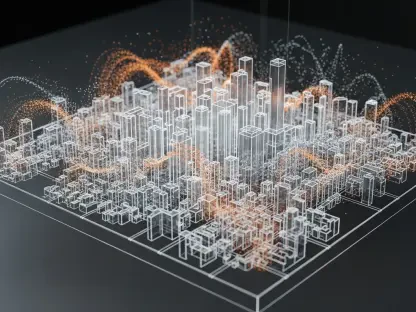Battery Energy Storage Systems (BESS) have emerged as vital components in the sustainable energy landscape, providing critical support for renewable energy integration and enhancing grid resilience. As the global community pivots toward greener energy solutions, the role of IoT technology in optimizing BESS efficiency, security, and resilience is coming to the forefront. In this article, we delve into the integration of connected IoT infrastructure and how it drives the global movement toward more sustainable and resilient energy systems.
The Role of IoT in Modern Energy Systems
Battery Energy Storage Systems are central to the transition toward renewable energy, reducing dependence on fossil fuels and aiding in decarbonization. Modern energy storage solutions must support the integration of renewable energy into smart power systems. This integration impacts all energy process stages, from generation to consumption. Companies and utilities require systems capable of adapting to real-time demands and balancing supply.
A connected IoT infrastructure facilitates this by providing real-time data communication, enabling precise monitoring and control of energy storage systems. This ensures stability and efficiency, crucial for managing energy flow from renewable sources such as solar panels and wind turbines. The integration of IoT with BESS allows for predictive maintenance, improving system longevity and performance.
Beyond merely integrating renewable energy, IoT-supported BESS can assist in the decentralization of energy systems. Large enterprises and municipalities can adopt self-generation solutions, creating microgrids that function independently from the main power grid. These microgrids not only contribute to a more sustainable energy landscape but also offer reliability in the face of grid disruptions. Hence, the IoT functions as the spinal cord of modern energy frameworks, seamlessly connecting diverse sources and facilitating a stable supply chain.
Building a Scalable IoT Infrastructure for BESS
Scalability is a core consideration when implementing BESS solutions. Energy storage systems need to be designed to grow in tandem with escalating energy demands, necessitating a meticulously planned IoT infrastructure. Incorporating scalable components like I/O gateways, edge protocol gateways, and edge computers provides the necessary flexibility for such growth. This setup ensures that additional energy storage units or renewable energy sources can be integrated without requiring an overhaul of the existing infrastructure.
Moreover, the use of standardized protocols such as Ethernet and CAN bus ensures seamless data transmission across all system components. This high level of connectivity is essential for onboarding future advancements in energy storage and generation technologies. Managed Ethernet switches, media converters, and industrial communication protocols such as IEC-61850-3 contribute to robust device-to-device communication, ensuring the system remains adaptive and up-to-date.
This connectivity is complemented by network redundancy measures like fiber-optic ring topology, which offers data stability. Redundant networking allows for continued operation even if specific network paths encounter issues, thus ensuring the system’s reliability. By preemptively addressing these elements, businesses can not only scale their operations smoothly but also ensure uninterrupted service, further solidifying the IoT infrastructure’s role as a backbone of modern energy systems.
Addressing Cost Concerns in IoT-Enhanced BESS
Implementing IoT in BESS involves considerable initial investments in hardware, software, installation, and maintenance. However, understanding the Total Cost of Ownership (TCO) is crucial for evaluating the profitability and sustainability of these investments. Despite the initial outlay, the efficiency gains and scalability offered by IoT integration can offset costs in the long term, leading to higher returns on investment.
Partnerships with experienced suppliers can further mitigate these expenses. Suppliers often provide turnkey solutions encompassing deployment, operation, and maintenance, which can ensure that the BESS operates at peak efficiency. This holistic approach optimizes energy use and minimizes waste, thereby maximizing profitability. Additionally, planning for future upgrades and scalability ensures sustained efficiency and cost-effectiveness, making the investment worthwhile.
Energy companies can also benefit from supplier partnerships that include full service and support packages, often incorporating predictive maintenance and real-time monitoring. Such services can prevent costly downtime and reduce maintenance costs, further driving down the overall TCO. Through these partnerships, businesses can achieve optimal financial planning and manage long-term operational costs more effectively, ensuring economic feasibility alongside technological advancement.
Leveraging Real-Time Data for Efficient Energy Management
One of the paramount advantages of IoT is the ability to leverage real-time data for efficient energy management. IoT-enabled BESS can collect and analyze vast data volumes from various sources, including solar panels, wind turbines, and battery management systems (BMS). This data-driven approach allows dynamic adjustments in energy storage and distribution, aligning with real-time supply and demand conditions.
The Power Conversion System (PCS) plays a crucial role in this process. It manages the dispatch of AC and DC power with real-time control, ensuring electricity scheduling is precise and efficient. Coupled with Energy Management Systems (EMS) and Supervisory Control and Data Acquisition (SCADA) software, these components provide comprehensive monitoring and control, optimizing BESS operations. Real-time EtherCAT control adds another layer of precision, allowing for rapid response to changes in energy input or consumption patterns.
The use of SCADA software and industrial PCs for real-time monitoring and power management further ensures system stability. These tools enable continuous oversight, allowing operators to detect and respond to issues promptly. With redundant IPCs and database backups, the system can maintain its stability even in the face of hardware failures or data corruption, preserving crucial real-time analytics and operational control.
Ensuring Connectivity and Security in IoT-Based BESS
Robust and secure communication infrastructure is vital for the effective functioning of IoT-based BESS. This infrastructure encompasses multi-layered security mechanisms, including Virtual Private Networks (VPNs), firewalls, and data encryption, to guard against cyber threats and ensure data integrity. With cyber threats continuously evolving, a comprehensive security strategy is indispensable for maintaining system reliability and user trust.
Network redundancy, another critical facet, involves using fiber-optic ring topology to ensure data stability and connectivity. This topology connects distributed BMS containers in a resilient manner, allowing the system to continue operating even if some network paths fail. Redundant network paths ensure that crucial data can travel along alternative routes, maintaining consistent communication channels essential for real-time monitoring and control functions.
Furthermore, autonomous computing power within the IoT architecture enhances security and resilience. Devices with localized computing capabilities can operate independently of central systems, reducing vulnerability to network disruptions. This autonomy allows for continual operation even when external connections are compromised, bolstering overall system robustness and ensuring that critical control functions remain active.
Practical Applications and Real-World Integration
Real-world implementation of IoT-enhanced BESS offers numerous practical benefits, from commercial and residential applications to large-scale industrial settings. For example, HVAC systems in commercial buildings can utilize analog inputs for temperature data and digital outputs for alarm detection. Integrating edge gateways, edge computers, and I/O devices ensures that these systems operate efficiently, responding to environmental changes in real-time.
Scalable architecture is essential for behind-the-meter applications, such as those found in commercial buildings and residential homes. Utilizing I/O modules, protocol gateways, and automation computers supports device bus protocols, ensuring comprehensive system performance. These applications demonstrate the versatility of IoT-enhanced BESS, illustrating how they can be tailored to various contexts to deliver optimal results.
Companies like Advantech exemplify the benefits of a full turnkey design service, integrating hardware and software solutions to support high-performance IoT systems. These integrative approaches not only enhance BESS functionality but also contribute to overall energy management, helping businesses achieve significant strides in their energy efficiency targets. By leveraging such advanced solutions, companies can align their operations with broader sustainability goals, contributing to a more resilient and eco-friendly energy infrastructure.
Conclusion
Battery Energy Storage Systems (BESS) have become essential players in the push for sustainable energy, offering vital support for incorporating renewable energy sources and boosting grid reliability. As the world shifts toward eco-friendly energy solutions, IoT technology’s role in maximizing the efficiency, security, and resilience of BESS is gaining significant attention. In this context, incorporating IoT infrastructure into BESS is becoming increasingly important.
In this article, we explore how integrating IoT infrastructure can optimize BESS performance and contribute to the global effort for more sustainable and resilient energy systems. IoT technology can monitor various performance metrics in real-time, allowing for proactive maintenance and preventing costly breakdowns. Enhanced security protocols provided by IoT help protect these vital systems from cyber threats. Additionally, IoT-enabled BESS can adapt to fluctuating energy demands, ensuring a stable supply of renewable energy and improving overall grid resilience.
By leveraging connected IoT infrastructure, BESS can provide efficient energy management and storage solutions. This integration not only ensures the optimal functioning of energy storage systems but also aligns with the broader goal of achieving a low-carbon future. As we continue to move toward greener energy paradigms, the synergy between IoT technology and BESS will play a crucial role in shaping a sustainable and resilient energy landscape.









